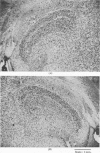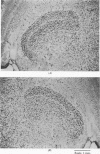Abstract
1. Kittens were visually deprived by suturing the lids of the right eye for various periods of time at different ages. Recordings were subsequently made from the striate cortex, and responses from the two eyes compared. As previously reported, monocular eye closure during the first few months of life causes a sharp decline in the number of cells that can be influenced by the previously closed eye.
2. Susceptibility to the effects of eye closure begins suddenly near the start of the fourth week, remains high until some time between the sixth and eighth weeks, and then declines, disappearing finally around the end of the third month. Monocular closure for over a year in an adult cat produces no detectable effects.
3. During the period of high susceptibility in the fourth and fifth weeks eye closure for as little as 3-4 days leads to a sharp decline in the number of cells that can be driven from both eyes, as well as an over-all decline in the relative influence of the previously closed eye. A 6-day closure is enough to give a reduction in the number of cells that can be driven by the closed eye to a fraction of the normal. The physiological picture is similar to that following a 3-month monocular deprivation from birth, in which the proportion of cells the eye can influence drops from 85 to about 7%.
4. Cells of the lateral geniculate receiving input from a deprived eye are noticeably smaller and paler to Nissl stain following 3 or 6 days' deprivation during the fourth week.
5. Following 3 months of monocular deprivation, opening the eye for up to 5 yr produces only a very limited recovery in the cortical physiology, and no obvious recovery of the geniculate atrophy, even though behaviourally there is some return of vision in the deprived eye. Closing the normal eye, though necessary for behavioural recovery, has no detectable effect on the cortical physiology. The amount of possible recovery in the striate cortex is probably no greater if the period of eye closure is limited to weeks, but after a 5-week closure there is a definite enhancement of the recovery, even though it is far from complete.
Full text
PDF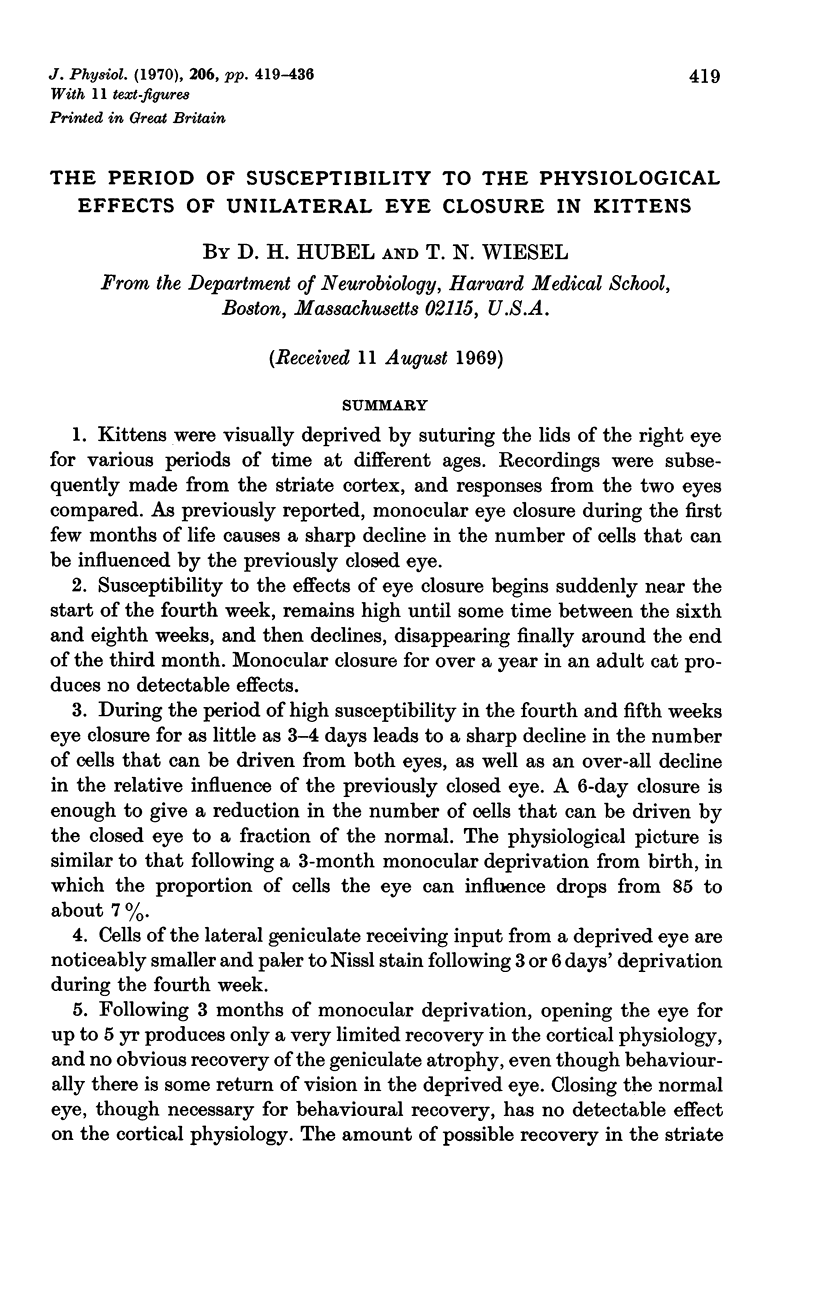
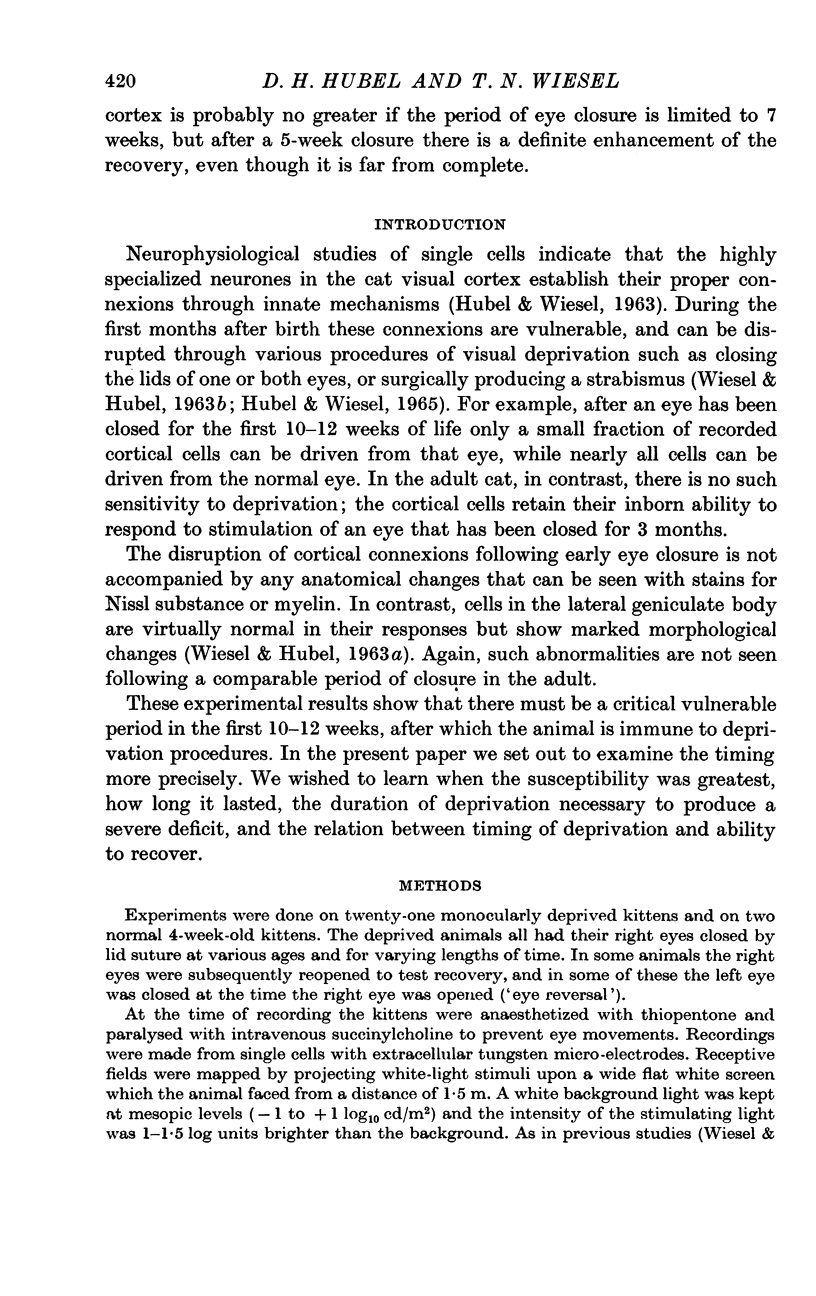
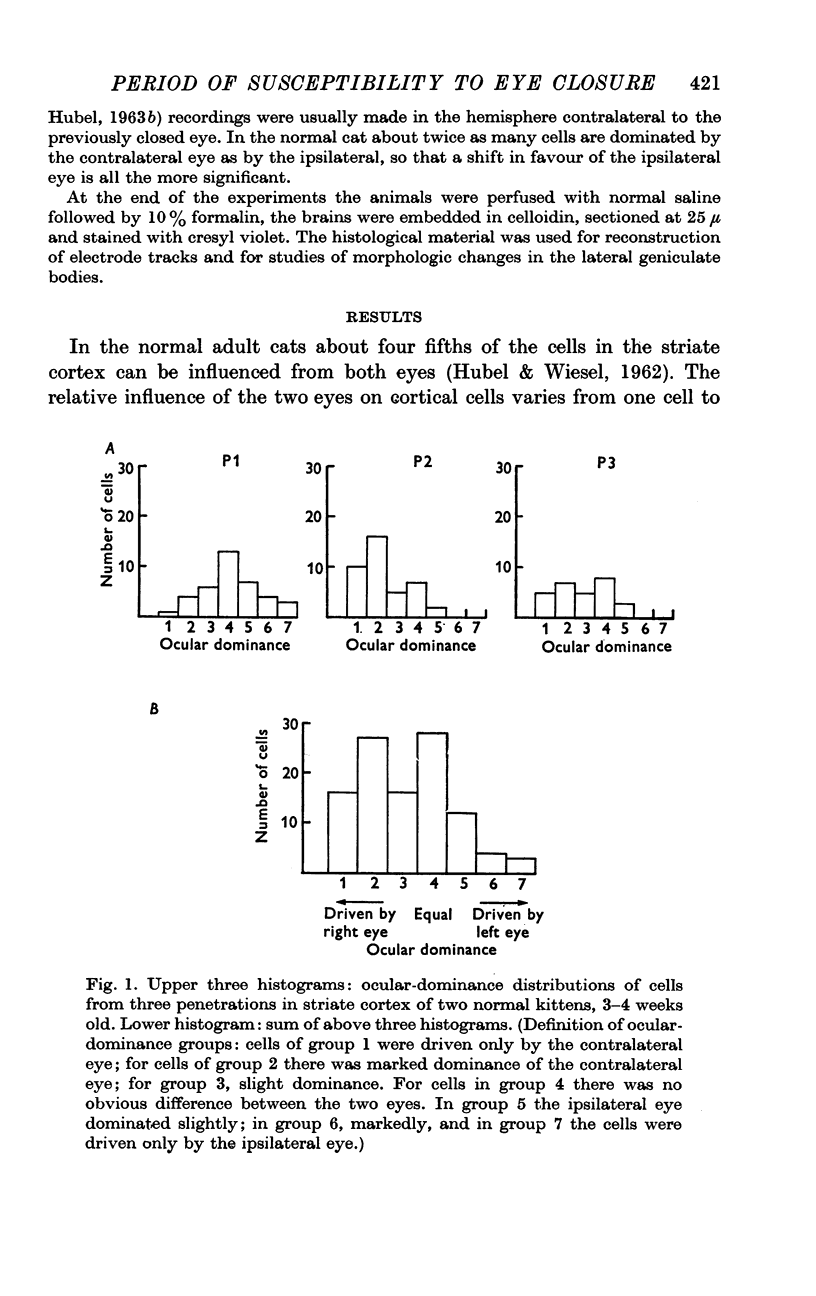
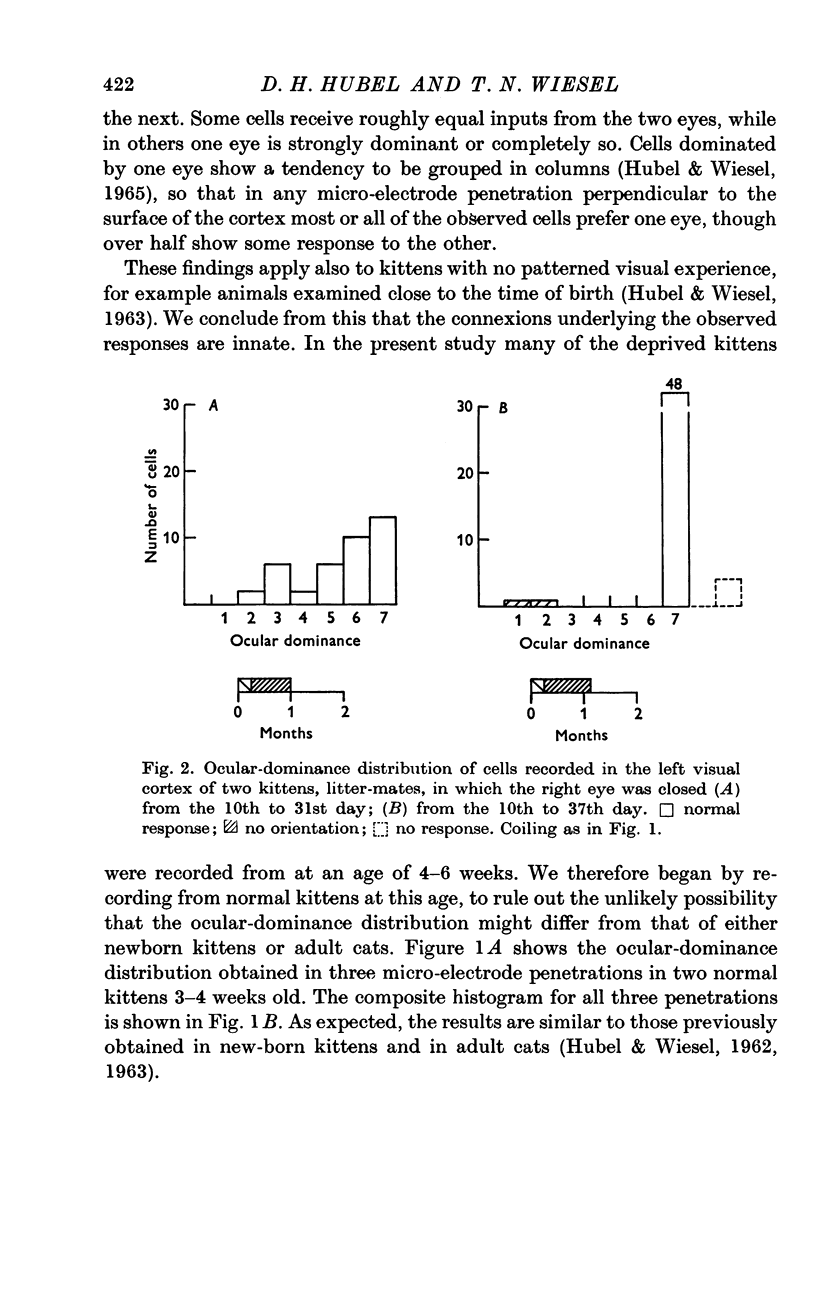
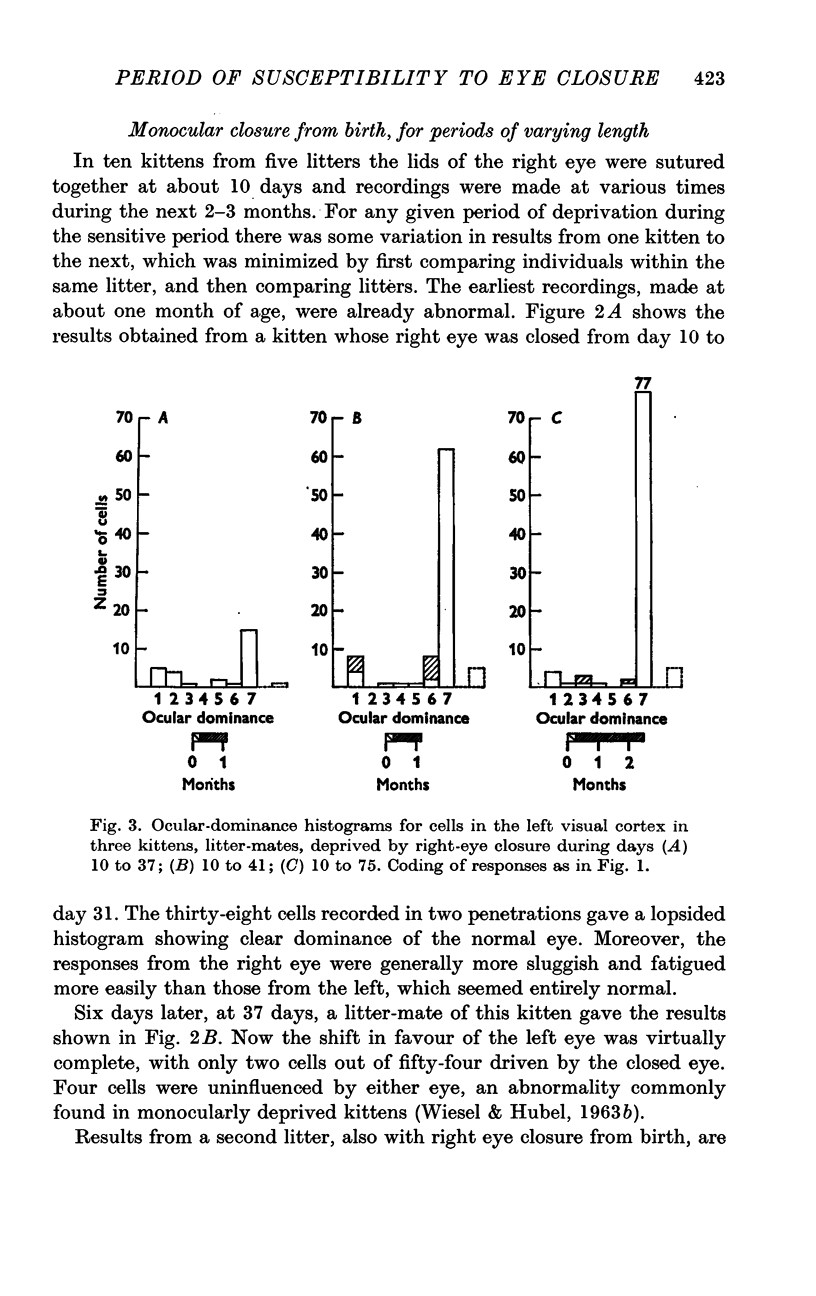
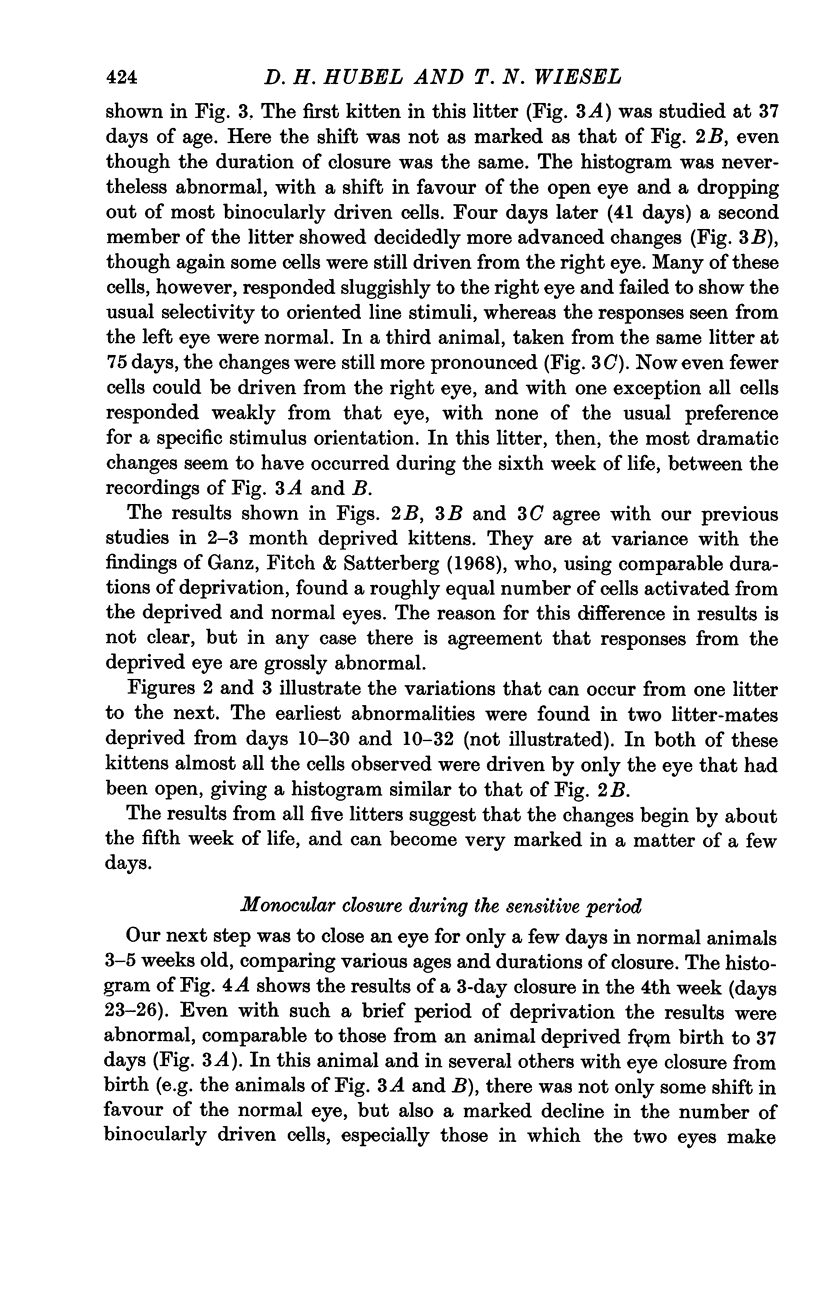
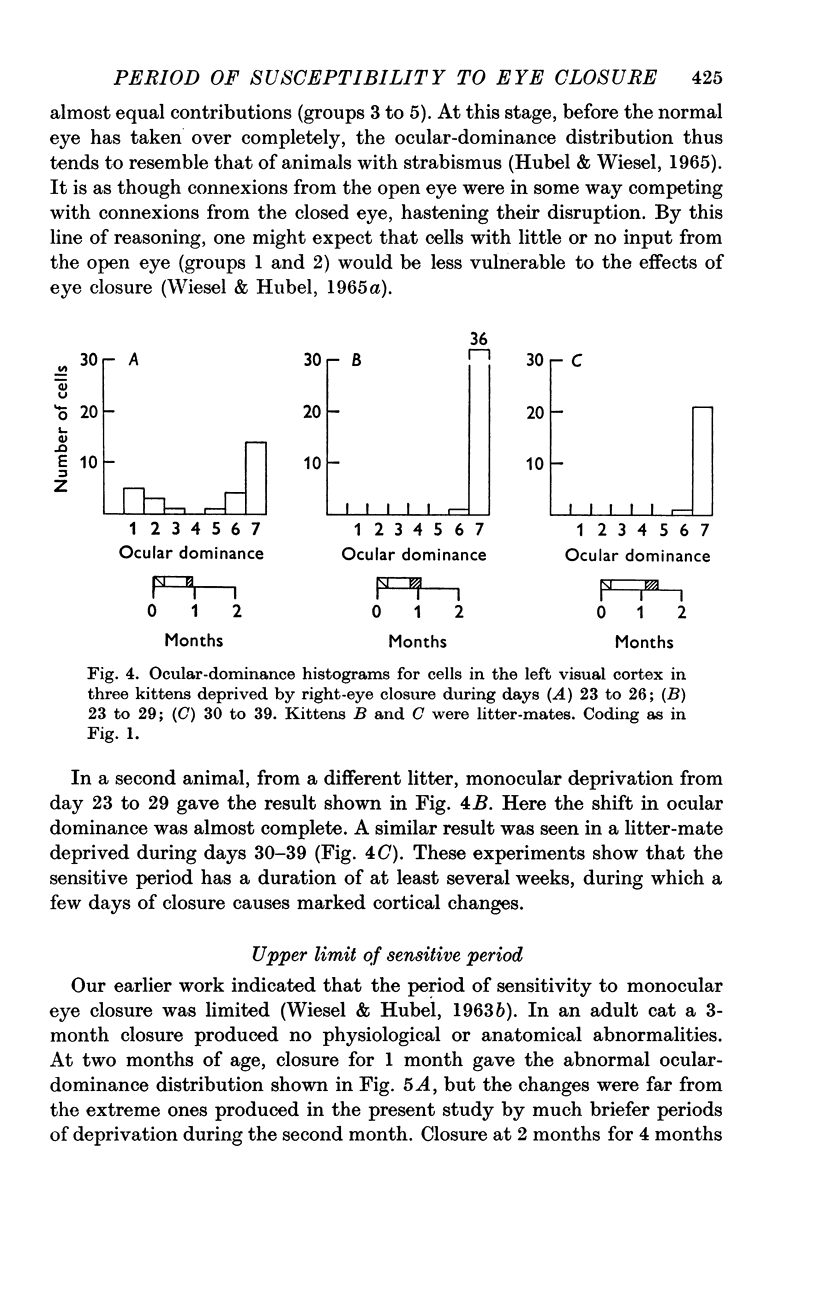
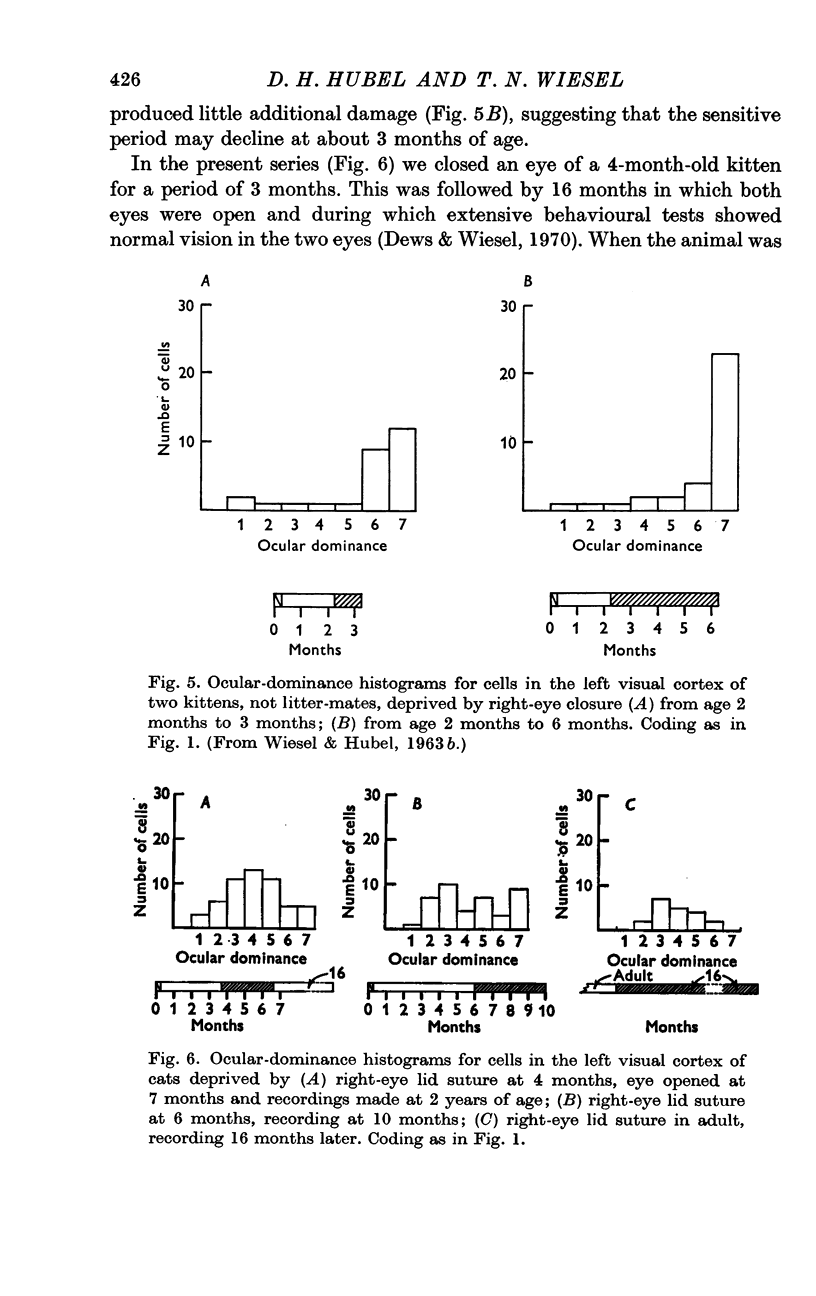
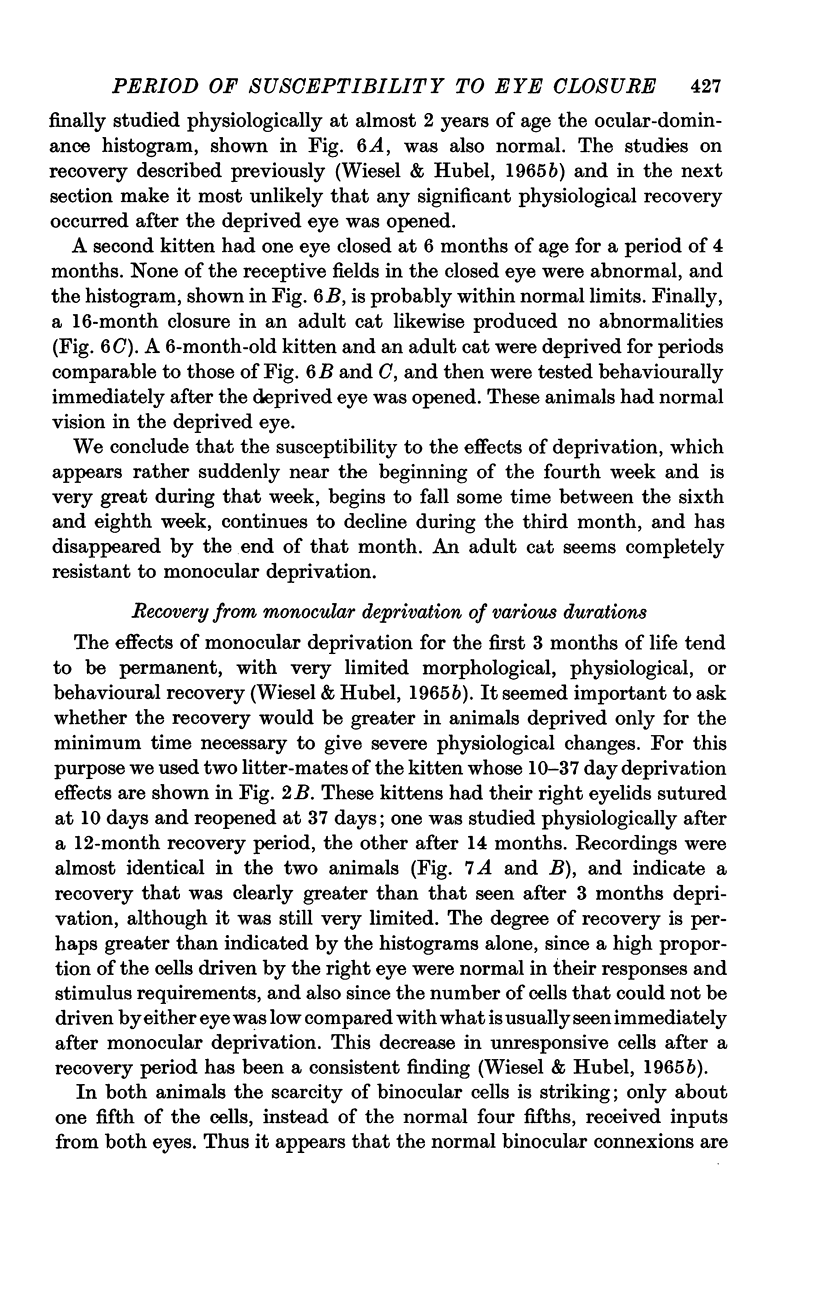
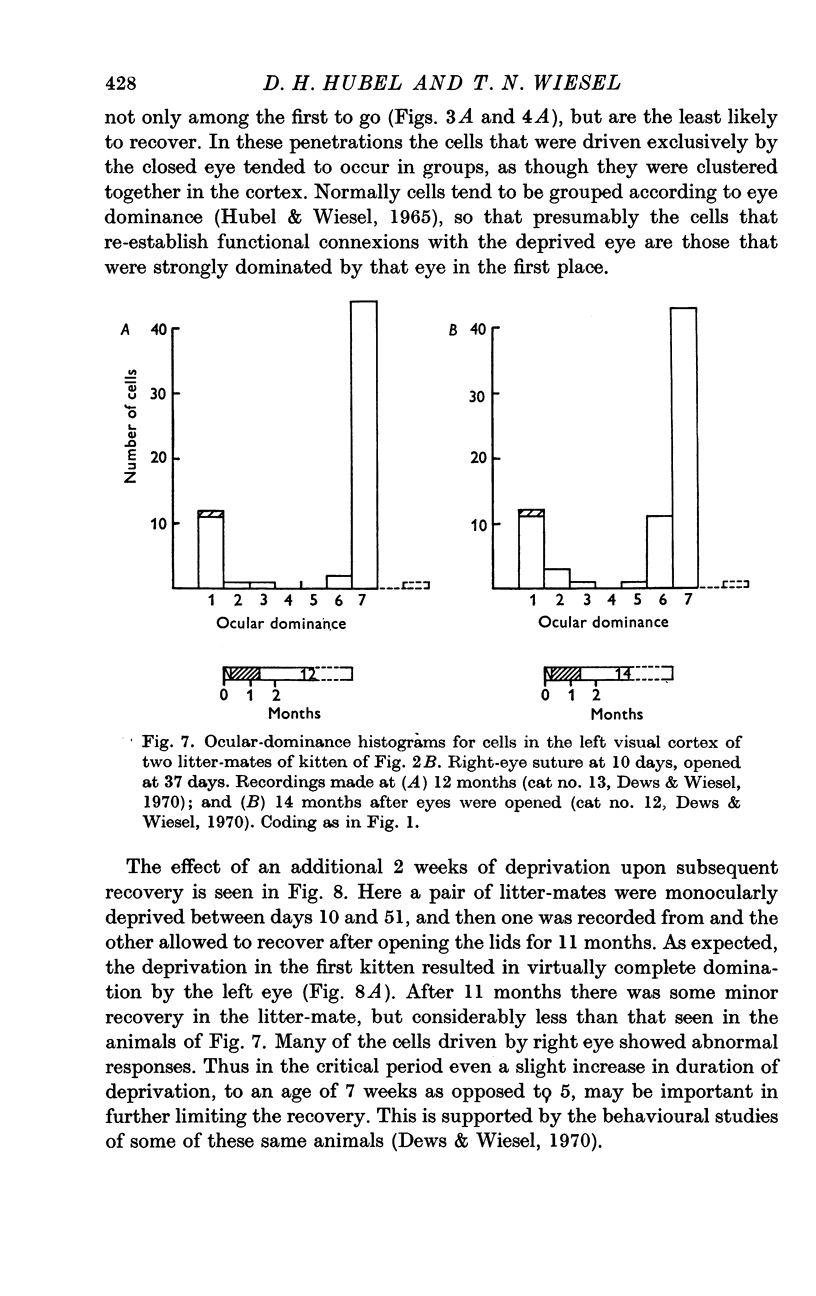
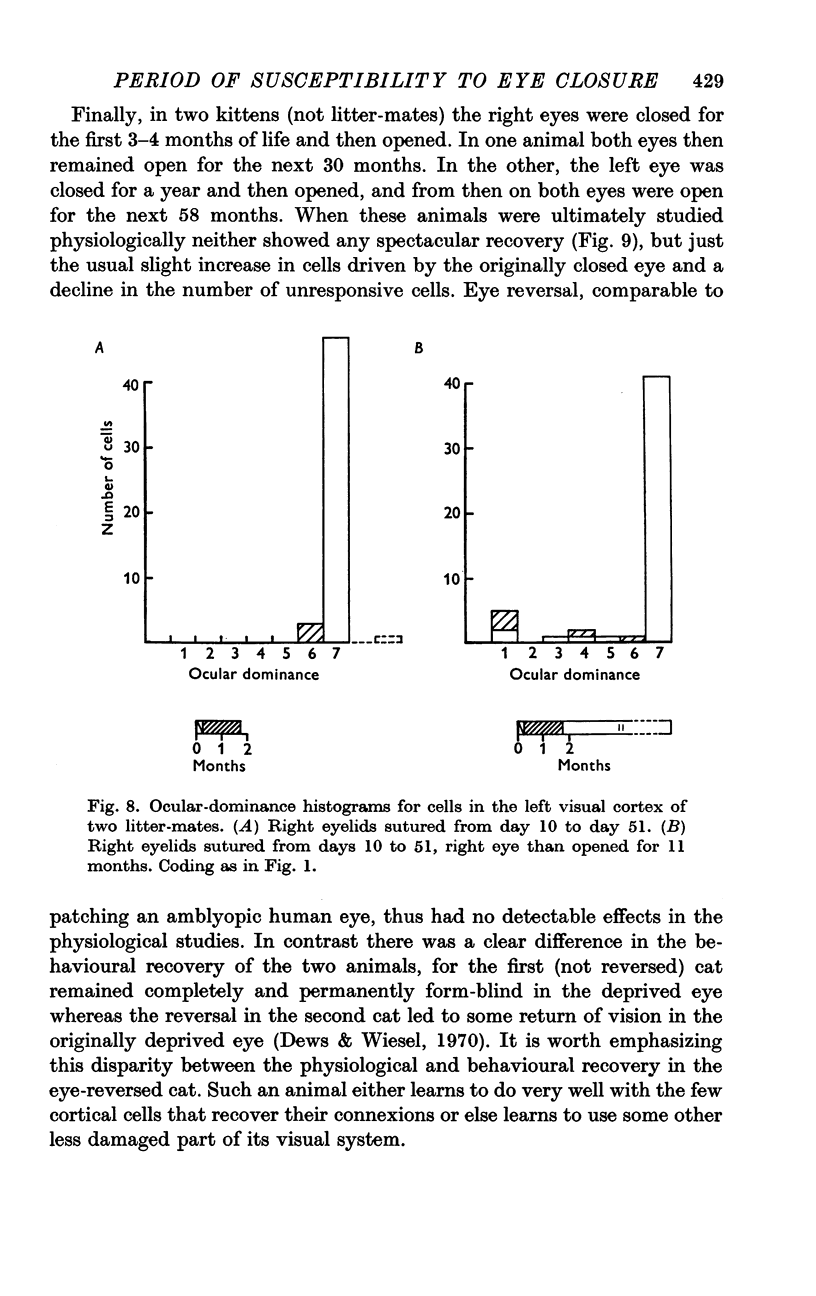
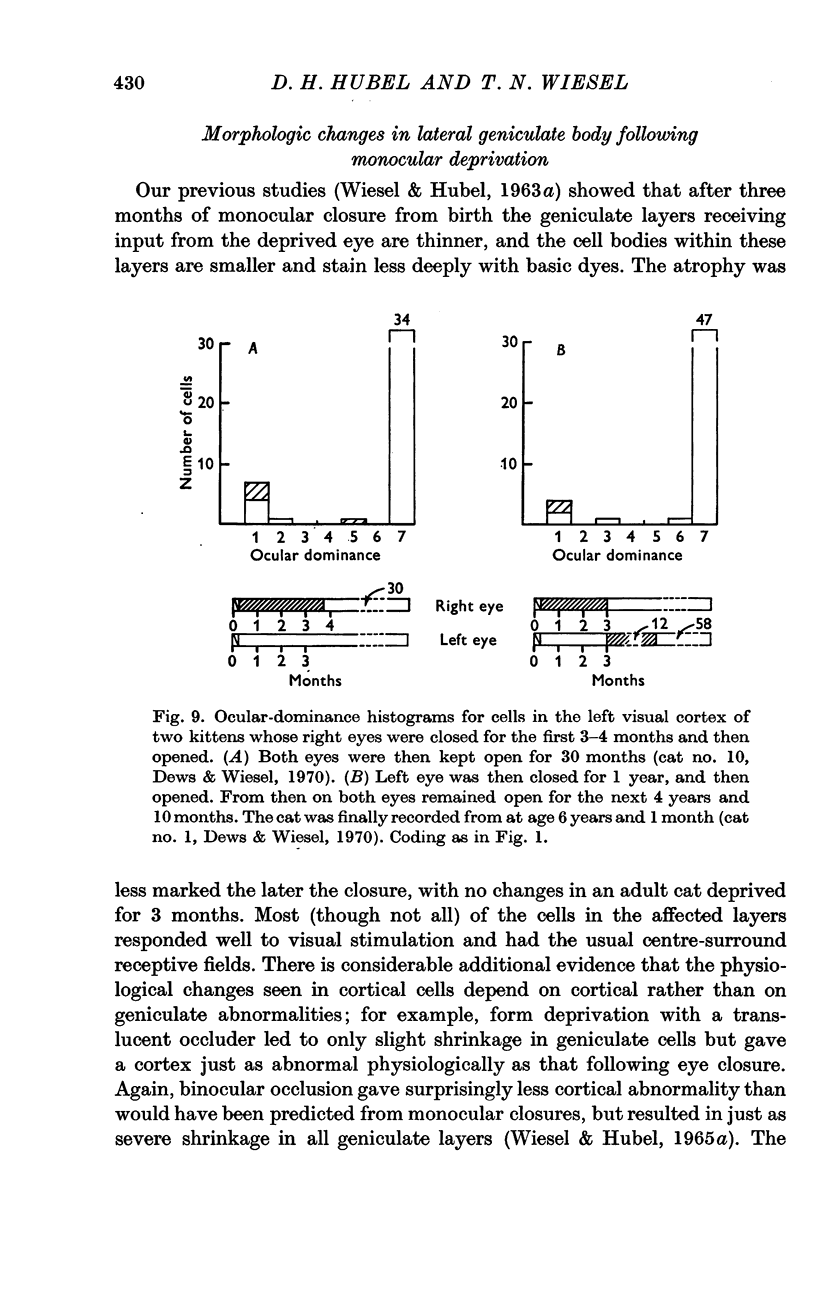
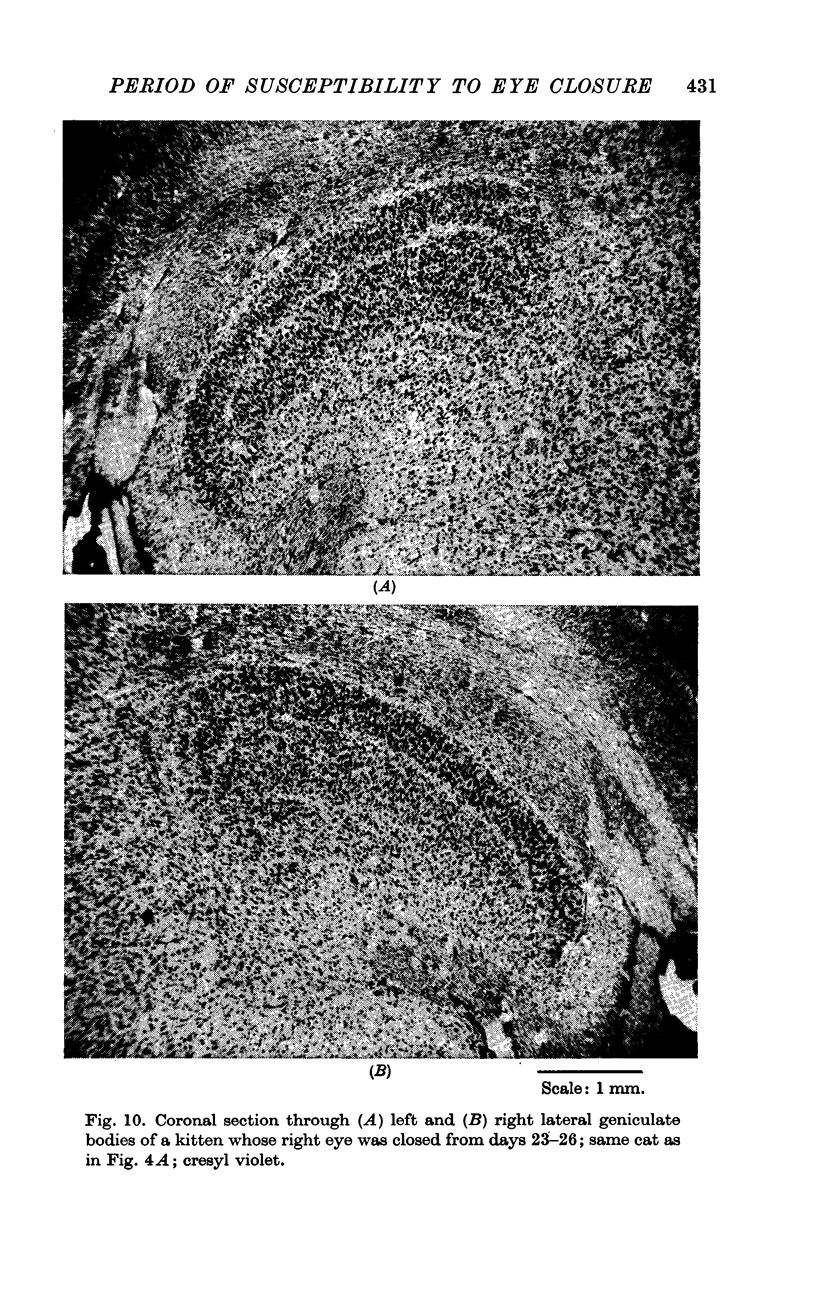
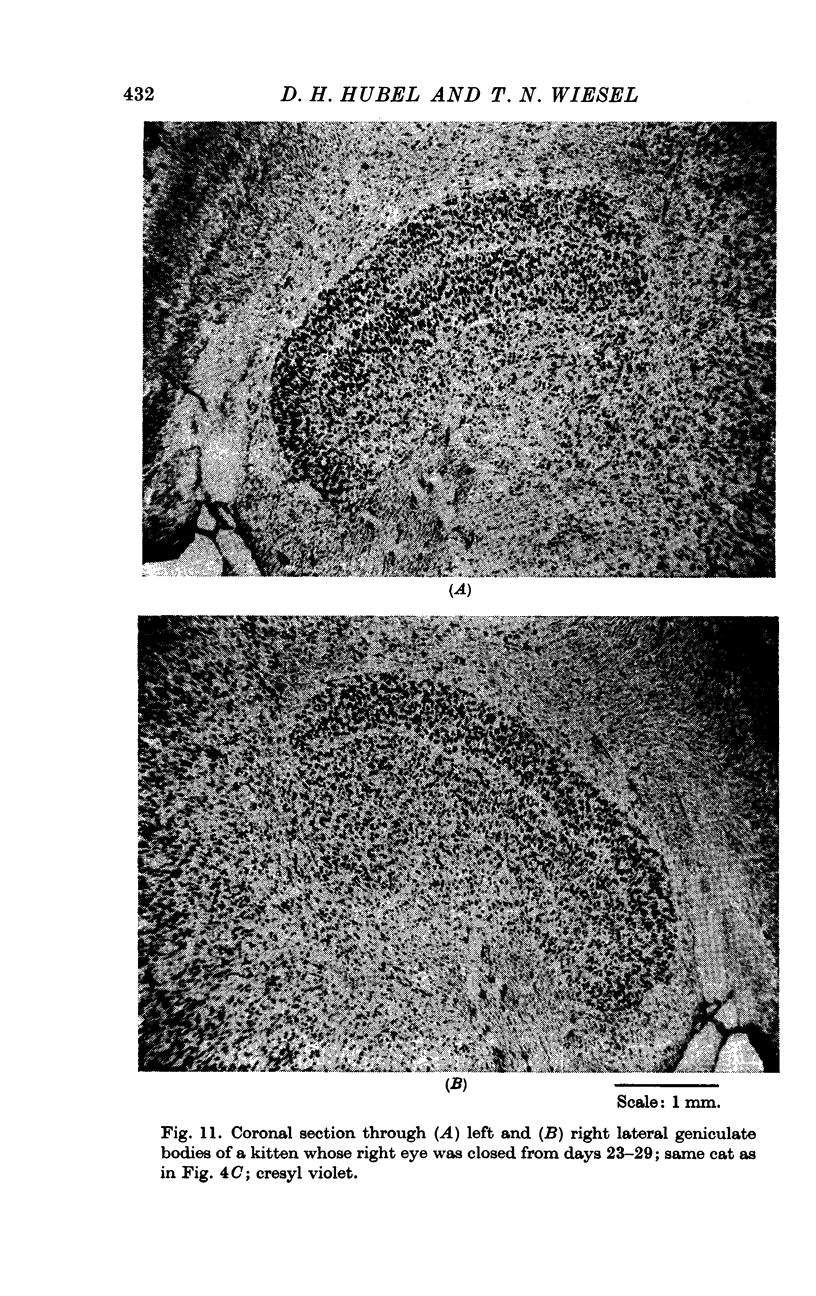
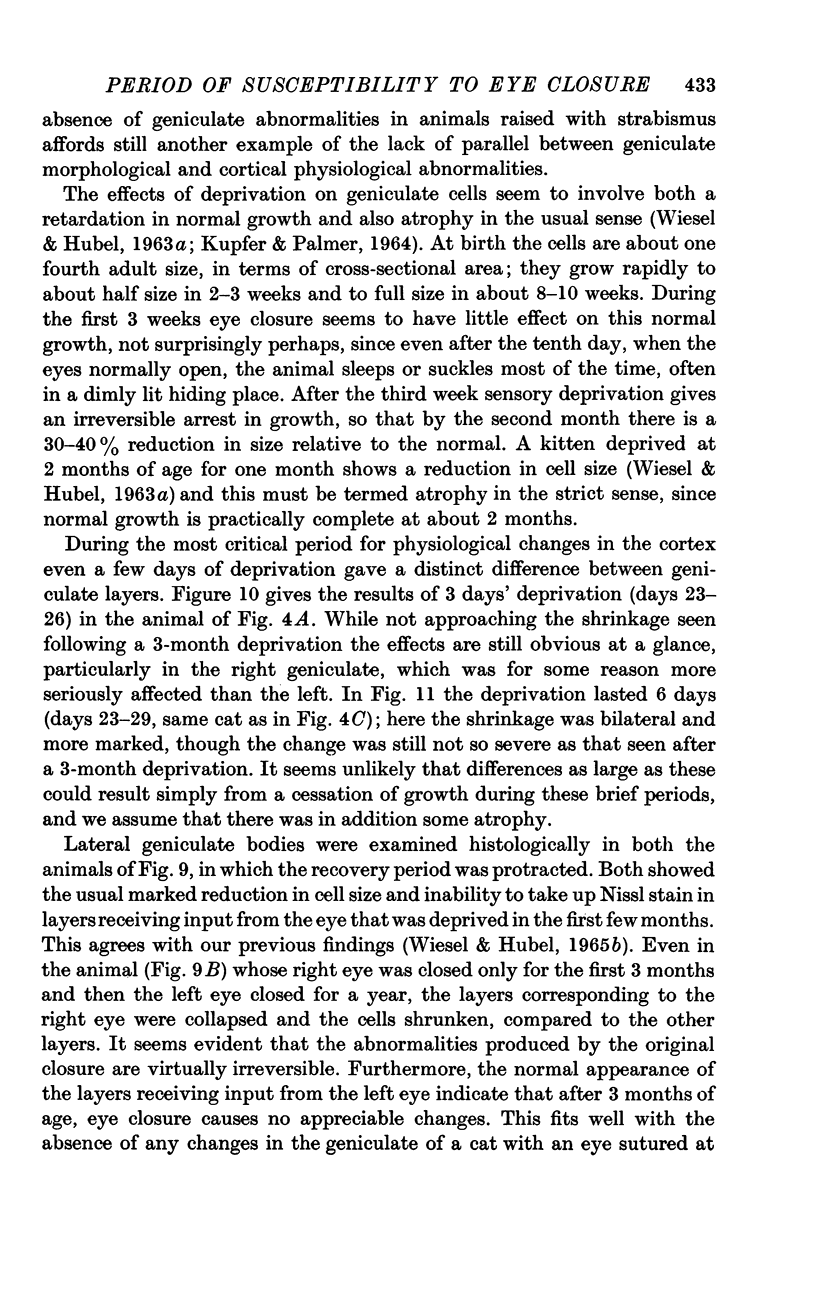
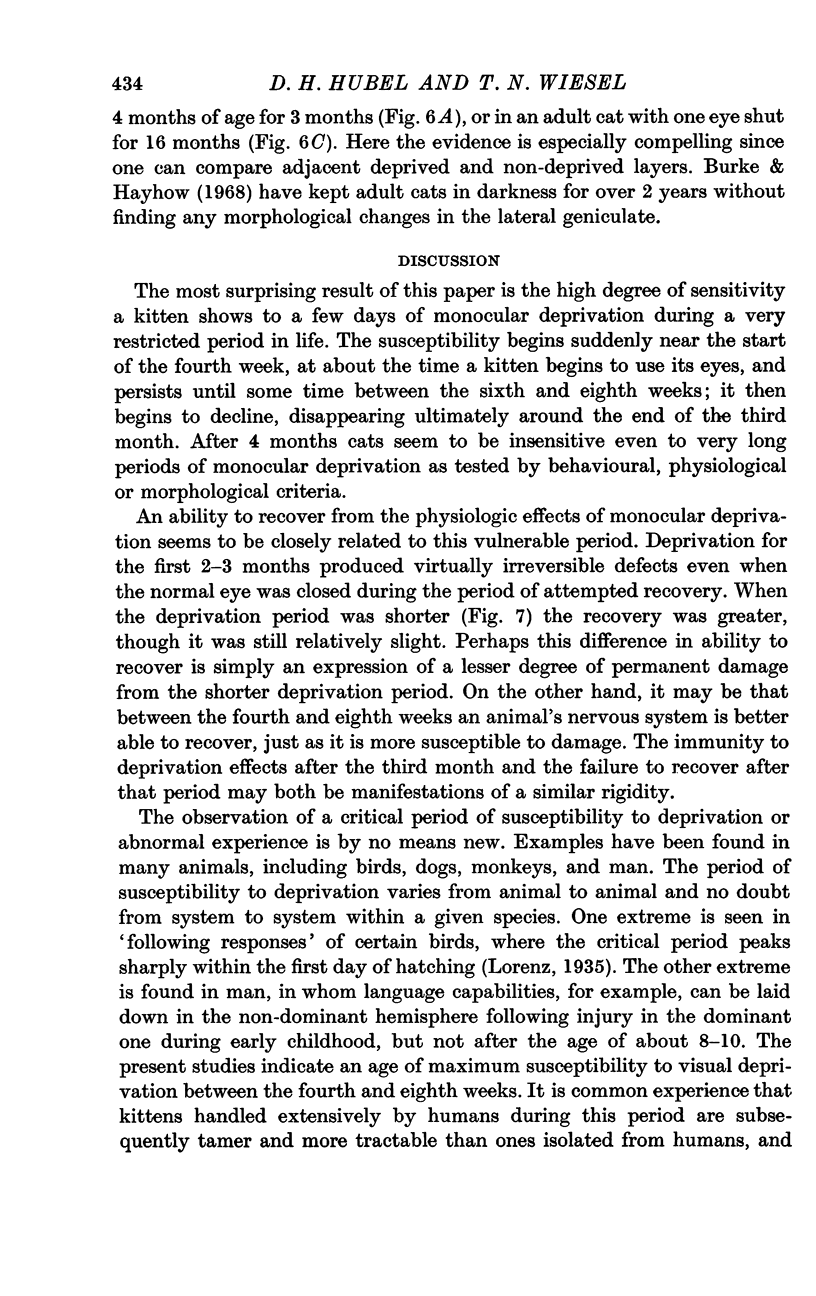
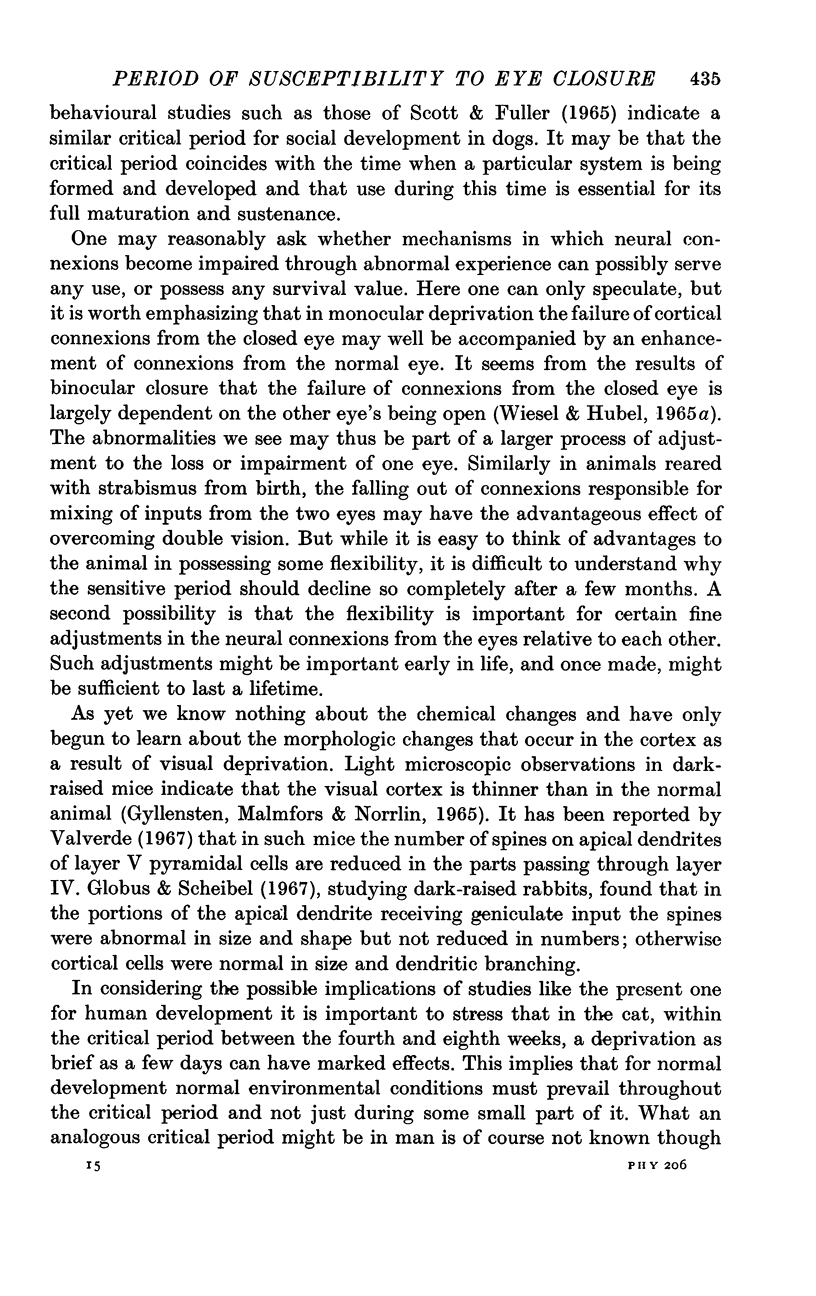
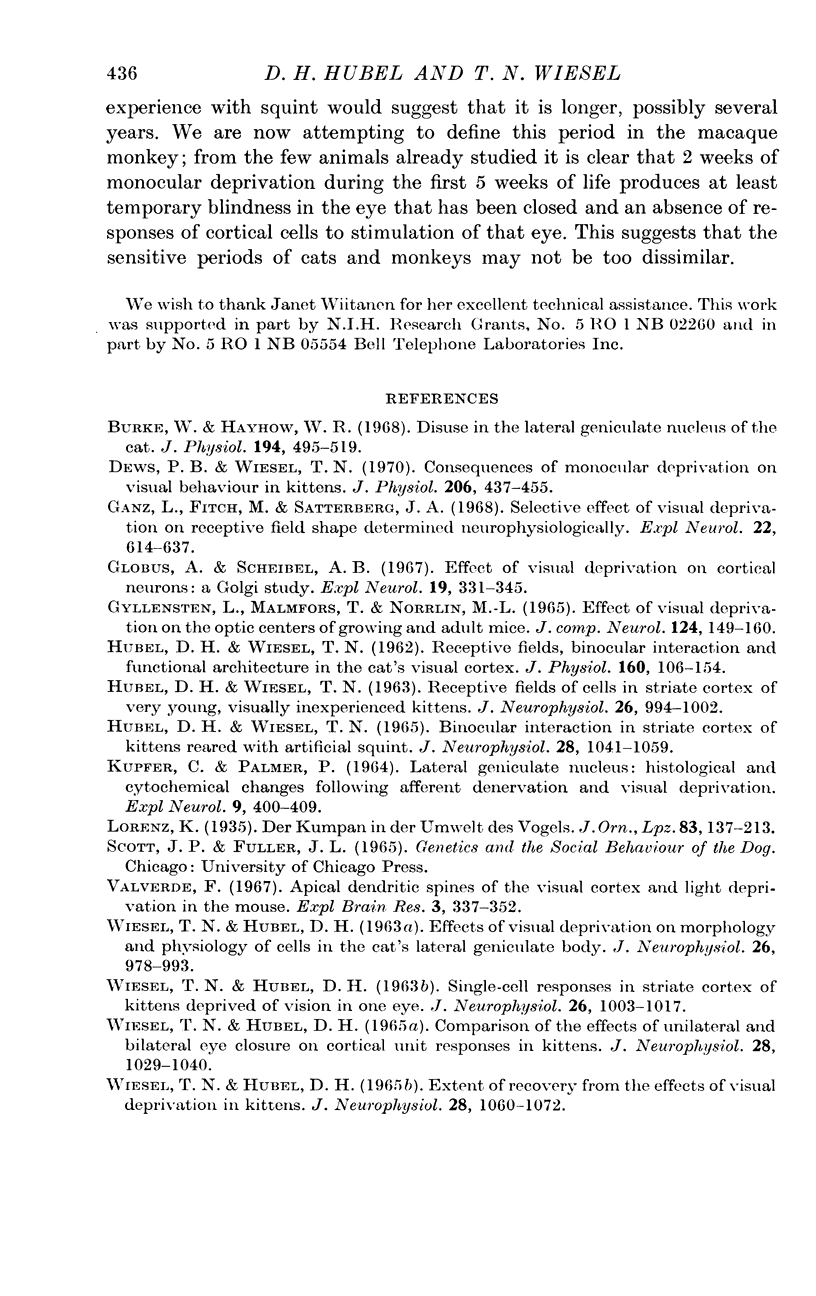
Images in this article
Selected References
These references are in PubMed. This may not be the complete list of references from this article.
- Burke W., Hayhow W. R. Disuse in the lateral geniculate nucleus of the cat. J Physiol. 1968 Feb;194(2):495–519. doi: 10.1113/jphysiol.1968.sp008420. [DOI] [PMC free article] [PubMed] [Google Scholar]
- Dews P. B., Wiesel T. N. Consequences of monocular deprivation on visual behaviour in kittens. J Physiol. 1970 Feb;206(2):437–455. doi: 10.1113/jphysiol.1970.sp009023. [DOI] [PMC free article] [PubMed] [Google Scholar]
- GYLLENSTEN L., MALMFORS T., NORRLIN M. L. EFFECT OF VISUAL DEPRIVATION ON THE OPTIC CENTERS OF GROWING AND ADULT MICE. J Comp Neurol. 1965 Apr;124:149–160. doi: 10.1002/cne.901240202. [DOI] [PubMed] [Google Scholar]
- Ganz L., Fitch M., Satterberg J. A. The selective effect of visual deprivation on receptive field shape determined neurophysiologically. Exp Neurol. 1968 Dec;22(4):614–637. doi: 10.1016/0014-4886(68)90153-2. [DOI] [PubMed] [Google Scholar]
- Globus A., Scheibel A. B. The effect of visual deprivation on cortical neurons: a Golgi study. Exp Neurol. 1967 Nov;19(3):331–345. doi: 10.1016/0014-4886(67)90029-5. [DOI] [PubMed] [Google Scholar]
- HUBEL D. H., WIESEL T. N. RECEPTIVE FIELDS OF CELLS IN STRIATE CORTEX OF VERY YOUNG, VISUALLY INEXPERIENCED KITTENS. J Neurophysiol. 1963 Nov;26:994–1002. doi: 10.1152/jn.1963.26.6.994. [DOI] [PubMed] [Google Scholar]
- HUBEL D. H., WIESEL T. N. Receptive fields, binocular interaction and functional architecture in the cat's visual cortex. J Physiol. 1962 Jan;160:106–154. doi: 10.1113/jphysiol.1962.sp006837. [DOI] [PMC free article] [PubMed] [Google Scholar]
- Hubel D. H., Wiesel T. N. Binocular interaction in striate cortex of kittens reared with artificial squint. J Neurophysiol. 1965 Nov;28(6):1041–1059. doi: 10.1152/jn.1965.28.6.1041. [DOI] [PubMed] [Google Scholar]
- KUPFER C., PALMER P. LATERAL GENICULATE NUCLEUS: HISTOLOGICAL AND CYTOCHEMICAL CHANGES FOLLOWING AFFERENT DENERVATION AND VISUAL DEPRIVATION. Exp Neurol. 1964 May;9:400–409. doi: 10.1016/0014-4886(64)90074-3. [DOI] [PubMed] [Google Scholar]
- Valverde F. Apical dendritic spines of the visual cortex and light deprivation in the mouse. Exp Brain Res. 1967;3(4):337–352. doi: 10.1007/BF00237559. [DOI] [PubMed] [Google Scholar]
- WIESEL T. N., HUBEL D. H. EFFECTS OF VISUAL DEPRIVATION ON MORPHOLOGY AND PHYSIOLOGY OF CELLS IN THE CATS LATERAL GENICULATE BODY. J Neurophysiol. 1963 Nov;26:978–993. doi: 10.1152/jn.1963.26.6.978. [DOI] [PubMed] [Google Scholar]
- WIESEL T. N., HUBEL D. H. SINGLE-CELL RESPONSES IN STRIATE CORTEX OF KITTENS DEPRIVED OF VISION IN ONE EYE. J Neurophysiol. 1963 Nov;26:1003–1017. doi: 10.1152/jn.1963.26.6.1003. [DOI] [PubMed] [Google Scholar]
- Wiesel T. N., Hubel D. H. Comparison of the effects of unilateral and bilateral eye closure on cortical unit responses in kittens. J Neurophysiol. 1965 Nov;28(6):1029–1040. doi: 10.1152/jn.1965.28.6.1029. [DOI] [PubMed] [Google Scholar]
- Wiesel T. N., Hubel D. H. Extent of recovery from the effects of visual deprivation in kittens. J Neurophysiol. 1965 Nov;28(6):1060–1072. doi: 10.1152/jn.1965.28.6.1060. [DOI] [PubMed] [Google Scholar]



